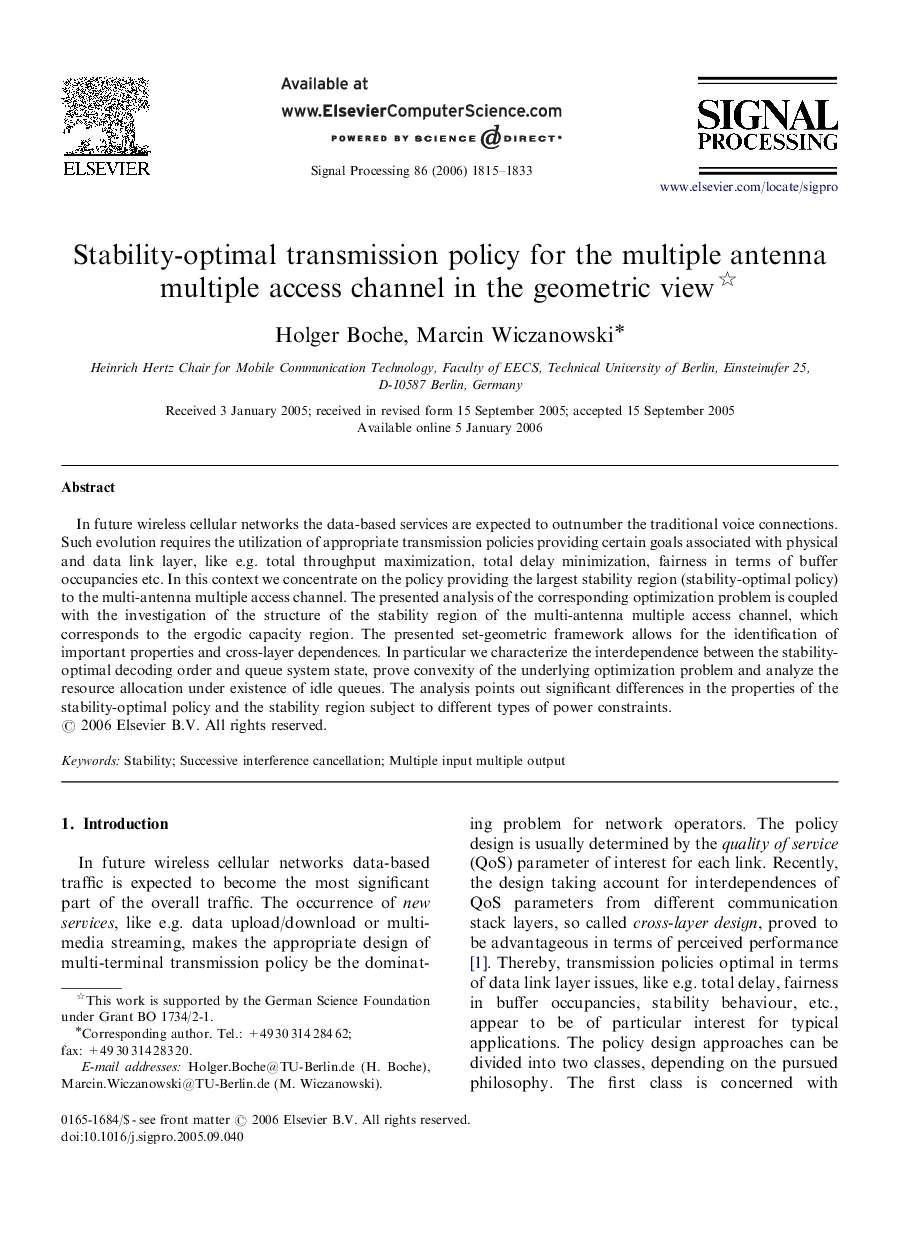| Article ID | Journal | Published Year | Pages | File Type |
|---|---|---|---|---|
| 567354 | Signal Processing | 2006 | 19 Pages |
In future wireless cellular networks the data-based services are expected to outnumber the traditional voice connections. Such evolution requires the utilization of appropriate transmission policies providing certain goals associated with physical and data link layer, like e.g. total throughput maximization, total delay minimization, fairness in terms of buffer occupancies etc. In this context we concentrate on the policy providing the largest stability region (stability-optimal policy) to the multi-antenna multiple access channel. The presented analysis of the corresponding optimization problem is coupled with the investigation of the structure of the stability region of the multi-antenna multiple access channel, which corresponds to the ergodic capacity region. The presented set-geometric framework allows for the identification of important properties and cross-layer dependences. In particular we characterize the interdependence between the stability-optimal decoding order and queue system state, prove convexity of the underlying optimization problem and analyze the resource allocation under existence of idle queues. The analysis points out significant differences in the properties of the stability-optimal policy and the stability region subject to different types of power constraints.
